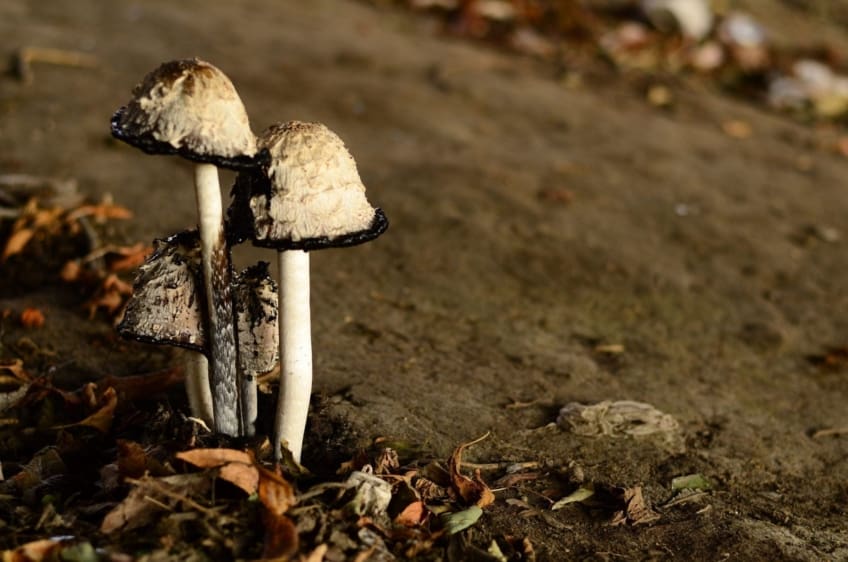
Related Topics
What is mushroom poisoning?
People are poisoned each year after eating mushrooms from their yard or outside locations. These mushrooms should not be eaten. It’s difficult to tell which mushrooms can be eaten and which cannot. Poisonous mushrooms can make you sick. Some are actually deadly.
Symptoms of mushroom poisoning
Common symptoms include:
- Nausea
- Stomach cramps
- Vomiting
- Diarrhea (sometimes bloody)
- Headache
- Dizziness
- Flushing (warm and red) in the face and abdomen
- Heart palpitations.
More serious symptoms include:
- Seizures
- Hallucinations
- Problems breathing
- Kidney/liver failure
- Coma
- Death
Symptoms can appear right after eating the poisonous mushroom. Or they could appear several hours later. Symptoms that occur within 2 hours are less dangerous than those that appear later (after 6 hours).
What causes mushroom poisoning?
Eating poisonous mushrooms causes mushroom poisoning.
How is mushroom poisoning diagnosed?
Mushroom poisoning is difficult to diagnose. Your doctor will examine you. They will ask you about your symptoms and when and what you ate recently. The diagnosis is based on the information you provide. If you are able to get a sample of the mushroom you know was eaten, bring it with you to the doctor or emergency department.
Can mushroom poisoning be prevented or avoided?
You can avoid mushroom poisoning by not eating mushrooms picked from the ground. It’s difficult to tell which mushrooms are poisonous and which are not. They can be growing next to each other. There are no tests to tell a poisonous mushroom from a nonpoisonous mushroom. Assume all wild mushrooms are poisonous. It’s best to buy them from the store.
Mushrooms that grow in the ground are more dangerous than mushrooms that grow on living trees. Additionally, mushrooms growing in lawns have likely been exposed to pesticides and other lawn-care chemicals. Mushrooms on the ground in forests are more dangerous than mushrooms in yards. Cooking poisonous mushrooms will not remove the toxins.
Mushroom poisoning treatment
If you suspect that you or someone you are with has mushroom poisoning, call your doctor. Or call the Poison Control Center. Call 911 if the person is unconscious, not breathing, or having convulsions. The phone number for the Poison Control Center is 1-800-222-1222. This number is answered 24 hours. It’s a good idea to keep this number in your phone contacts. Take the person to the emergency room. If possible, bring a few of the mushrooms the person ate with you to the doctor or the emergency room.
If the person has thrown up, the worst is probably over. Doctors may give the person activated charcoal to cause vomiting. The doctor will check the person’s temperature, heart rate, and blood pressure. They will be watched closely for severe symptoms and complications. The person will be sent home if they have no symptoms of severe poisoning, and if the mushroom is proven harmless. Your doctor will ask you to watch the person for any symptoms of mushroom poisoning for the next 24 hours.
Of special note: Decades ago, people were encouraged to keep ipecac syrup in their homes to induce vomiting in case of poisoning. However, current research shows that ipecac syrup is unsafe to use and is not effective. It can no longer be purchased. Bottom line: Do not use it if someone has it and gives it to you.
Living with mushroom poisoning
Short-term effects of living with mushroom poisoning are unpleasant. These are things related to vomiting and diarrhea. More severe symptoms may take longer to recover or cause permanent damage.
Questions to ask your doctor
- Are poisonous mushrooms dangerous for my pets?
- What if I don’t know if the person I’m with ate a poisonous mushroom?
- Can over-the-counter nausea medicine help?
- Should I be seen in an office or the emergency room if I may have eaten a poisonous muchroom?
![]()
Copyright © American Academy of Family Physicians
This information provides a general overview and may not apply to everyone. Talk to your family doctor to find out if this information applies to you and to get more information on this subject.






